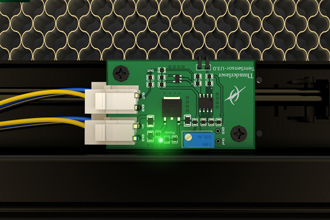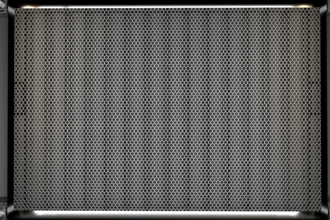As the saying goes, it is the heart of laser equipment and plays a decisive role in the quality of laser cutting. A good laser should have ideal mode, stable power and other elements. There are many kinds of lasers, which can be defined differently from different angles. According to the excitation medium, it can be roughly divided into solid-state laser and gas laser. They use different solid or gas as the medium respectively. For example, the earlier laser used Ruby as the medium.
At present, the mainstream laser for laser cutting is carbon dioxide laser, followed by YAG laser. YAG laser has the characteristics of high photoelectric conversion efficiency and small volume, but its application is greatly limited due to the fast loss of energy pump source and high maintenance cost. With CO2 laser, it is easy to obtain ideal laser mode and high energy. In addition, it has stable performance and short downtime, so it is widely used in cutting all kinds of materials.

1: Excitation mode: carbon dioxide laser uses electrode to excite carbon dioxide gas to generate laser. According to the installation position of metal electrode, it can be divided into DC excitation and RF excitation.
2: Laser frequency and laser output are divided into pulse output and continuous output. The laser used for cutting and welding mainly adopts pulse output mode. Pulse frequency mainly affects the cutting speed and incision roughness. In order to obtain high-speed cutting, high frequency is essential. At present, the frequency of CO2 laser produced by most manufacturers is within 5000Hz.
3: Beam divergence angle, strictly speaking, beam divergence angle does not belong to the laser part, but because the mode of the laser has a great influence on the far-field divergence angle, we will discuss it here. The influence of beam divergence angle on cutting quality is reflected in the width and slope of the incision. The smaller the divergence angle is, the narrower the width and slope of the incision are, so the higher the cutting quality is.
4: Laser mode is one of the important indexes to measure laser quality. It can be divided into single mode, fundamental mode and multimode. The fundamental mode is tem-00 mode, and its exponent on X and Y axis is 0, so it is an ideal dot. The beam diameter can be obtained by using tem-00 mode laser, and the slit and faster cutting speed can be obtained because of its small spot. And the multimode is non-zero index in XY direction, the beam quality is poor, generally only with welding and not with cutting.
5: Laser power, including peak power, energy stability and other factors. Different power can cut through different thickness in metal plate cutting. Take 4kw laser as an example, it can cut 20 mm thick carbon steel plate, or 15 mm stainless steel, 10 mm aluminum alloy; while laser above 5kW can cut 25 mm thick carbon steel, stainless steel up to 20 mm. Another index of power is power stability, excellent cutting quality, must be excellent incision throughout. Long term production is also a very important test for lasers.
Due to the electrode ablation, the power of DC excited laser decays for a long time. In addition, the vacuum pump and turbine pump of some lasers are lubricated with lubricating oil, which leads to the pollution of the laser resonator and shortens the life of the laser.






